
Sprouting Vs Microgreens: What’s The Difference?
Sprouts and microgreens offer almost anyone the opportunity to grow edible plants at home. But what are the similarities and differences between the two? Here we review the key facts about these highly sought-after foodstuffs.
Sprouts and microgreens offer almost anyone the opportunity to grow their own food at home, no matter how little space or time they have available. While there are similarities between these two micro-crops, they are quite distinct.
In this article, we compare sprouts and microgreens, and discern their similarities and differences.
Are microgreens the same as sprouts?
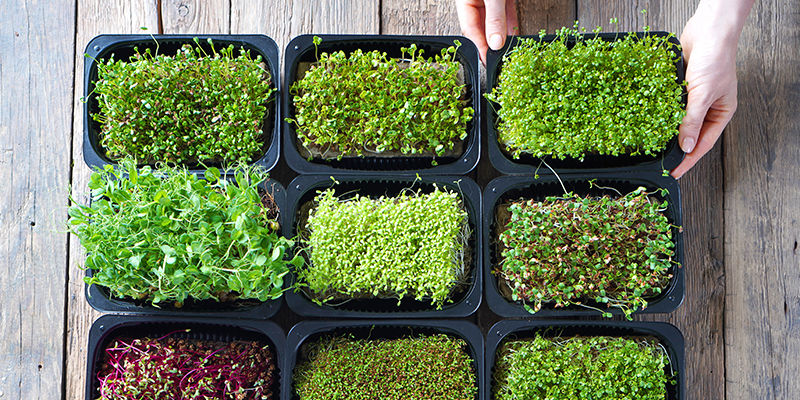
No, they are not the same. Sprouts and microgreens can be the same species, and a microgreen will at one point have been a sprout, but in practical terms they are different.
Microgreens are young, leafy plants—around two weeks old—that are grown in a soil medium and used for culinary and nutritional purposes. Sprouts, on the other hand, are only a few days old and are not grown in any medium. They too are harnessed for their nutritious nature and taste, but are used somewhat differently from microgreens.
Can you turn sprouts into microgreens?
Not really. Microgreens do go through a sprout stage, but these sprouts are in soil, and thus can’t really be used in the same way that “sprouts” are. And the reason that sprouts can’t become microgreens is because many are grown in a jar without a growing medium.
If someone could be bothered to carefully plant them in soil, then they could technically be grown into microgreens or even full-sized plants. However, in practice this would take a lot of effort, and it would be far better to just plant microgreen seeds in soil from the very beginning.
Microgreens vs sprouts
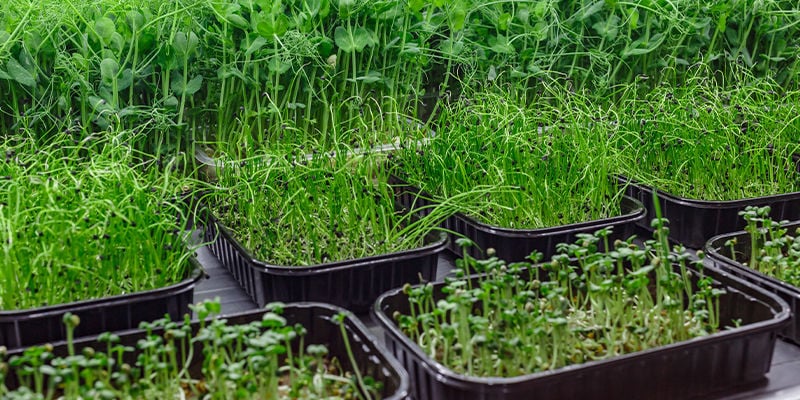
Though similar, there are a variety of differences between microgreens and sprouts, at least in terms of growing and usage.
Home-growing
One of the biggest differences between sprouts and microgreens is how they’re grown.
Sprouts, as mentioned, are grown in jars without any growing medium whatsoever. All they need is a little moisture and light, and their seeds will soon split open and the sprouts will emerge. Many are grown in a single jar, and they only grow for 3–5 days before they are harvested. Moreover, they won’t have time to develop any true leaves, but will only produce cotyledons—the first leaves that come directly out of the seed.
Microgreens, on the other hand, are grown in soil, much like most normal seeds. Although, they tend to be planted much closer together than you would plant seeds destined for maturity. These plants are grown for around two weeks, and are allowed to develop true sets of leaves. Indeed, it is these rich and fresh true leaves that growers are often after.
Nutritional value
Both sprouts and microgreens are prized for their rich nutritional content. However, the nutritional value of each varies.
Before we go further, it’s worth noting that there are many different species of plant that can be grown as microgreens or sprouts, and each will exhibit different nutritional profiles at each stage. That being said, we can make some general comments about the nutritional content of sprouts and microgreens.
Sprouts (specifically broccoli, radish, lentil) tend to be very high in antioxidants as they contain a high content of polyphenols and L-ascorbic acid. Furthermore, they are better sources of amino acids, pectins, and sugars than microgreens.
Microgreens, on the other hand, tend to contain more carotenoids and chlorophylls, and organic acid, without any sugars. This makes them better suited to anti-diabetic and anti-cholinergic purposes than sprouts.
Uses
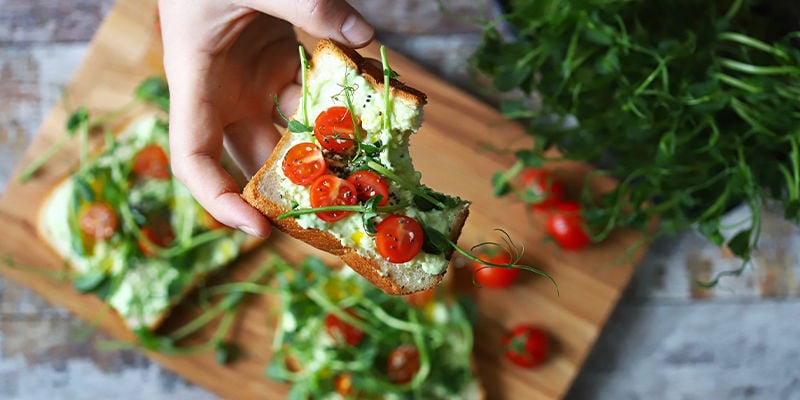
The two have fairly similar uses, and can be used together or separately.
Sprouts are very small and mainly used in salads to add flavour and nutritional value. However, they can also be used in various Asian dishes, such as pho, ramen, or spring rolls.
Microgreens, similarly, tend to be used in salads. However, while sprouts are added for flavour and sharpness, microgreens are large enough to sometimes make up the bulk of a salad, or at least contribute significantly.
Species
Another difference between sprouts and microgreens is the species of plant people use for each. Some plants are more well-suited to being harvested as sprouts, while others are more well-suited to becoming microgreens. There is also some crossover, as demonstrated by the list below.
Popular sprouts and microgreens to try
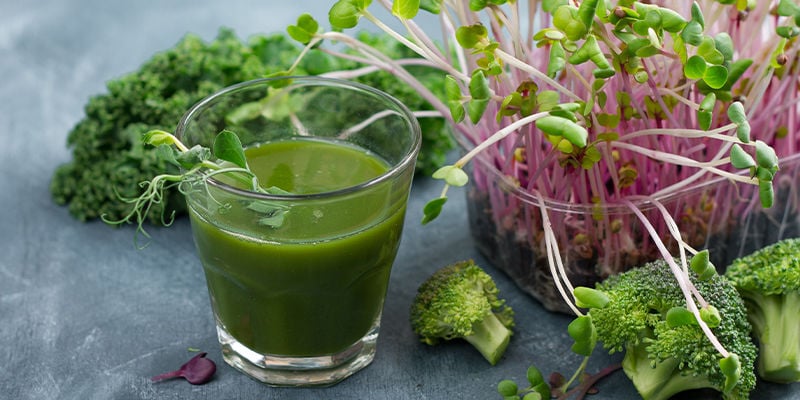
Popular sprouts include:
- Alfalfa
- Broccoli
- Clover
- Mung bean
- Lentils
- Mustard
Popular microgreens include:
- Alfalfa
- Beet
- Chard
- Clover
- Kale
- Kohlrabi
- Peas
- Radish
Are microgreens safer to eat than sprouts?
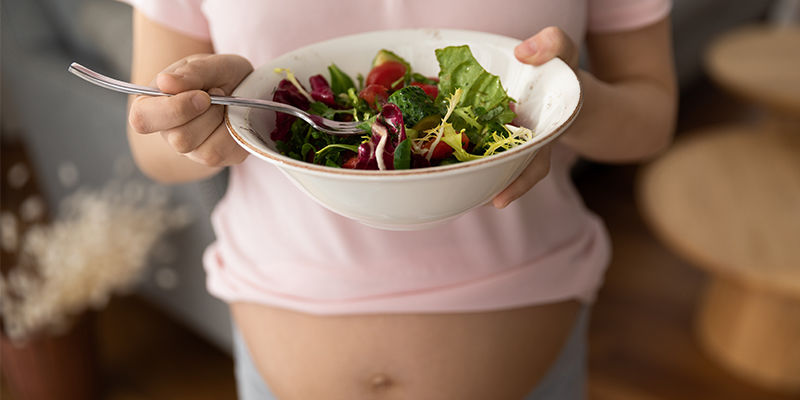
It’s important to be a little careful with sprouts as they can host bacteria that aren’t usually found on other forms of edible plants. If dangerous bacteria already exist on the seeds, then the moist and warm environments that sprouts are grown in make the perfect breeding ground for them. Whereas, if you grow seeds in soil, these bacteria won’t make it onto the plant itself.
People in the following groups should avoid raw sprouts altogether:
- Pregnant women
- People with compromised immune systems
- Elderly people
- Young children
For anyone else, you can take the following precautions:
- Use quality sprouting seeds. These will be clean from contamination, and the yields will be better.
- Clean everything that touches your seeds before and during the growing process; this reduces the chance of contamination.
- Use clean water. Rinse sprouts at least twice daily; this helps prevent the buildup of unwanted bacteria.
- Drain well.
- Store sprouts properly in the refrigerator, and use them within a week.
- • If in doubt, cook your sprouts.
-
 5 min
July 24, 2023
Microgreens: What Are They And How To Grow
Microgreens are the young seedlings of plants, which can be grown and harvested in less than three weeks. Delicious and packed with nutrients, they're well worth growing. Here's how to do it...
5 min
July 24, 2023
Microgreens: What Are They And How To Grow
Microgreens are the young seedlings of plants, which can be grown and harvested in less than three weeks. Delicious and packed with nutrients, they're well worth growing. Here's how to do it...
-
 4 min
July 11, 2023
Top 10 Interesting Plants To Grow
Growing plants at home is rewarding and fun. Try one, or some, of these peculiar cultivars for some extra joy, dazzling aesthetics, and the most delicious flavours. Which of these interesting...
4 min
July 11, 2023
Top 10 Interesting Plants To Grow
Growing plants at home is rewarding and fun. Try one, or some, of these peculiar cultivars for some extra joy, dazzling aesthetics, and the most delicious flavours. Which of these interesting...
-
 6 min
July 4, 2023
Top 10 Rare Superfoods To Boost Well-Being
Looking to take your healthy diet and lifestyle to the next level? Superfoods are packed with nutrients, vitamins, and minerals, and can help make an already healthy routine even better. Keep...
6 min
July 4, 2023
Top 10 Rare Superfoods To Boost Well-Being
Looking to take your healthy diet and lifestyle to the next level? Superfoods are packed with nutrients, vitamins, and minerals, and can help make an already healthy routine even better. Keep...
-
 3 min
June 30, 2023
How To Grow Sprouts
Sprouts can grow from all sorts of lentils and beans, and have great nutritional value! Growing sprouts at home is incredibly easy and very rewarding. Learn how to do it below.
3 min
June 30, 2023
How To Grow Sprouts
Sprouts can grow from all sorts of lentils and beans, and have great nutritional value! Growing sprouts at home is incredibly easy and very rewarding. Learn how to do it below.








 United States
United States











